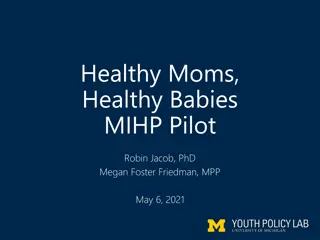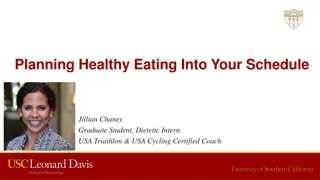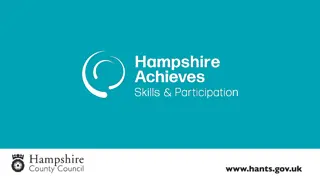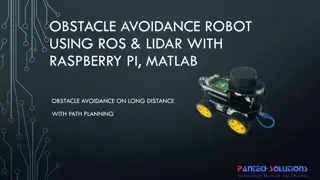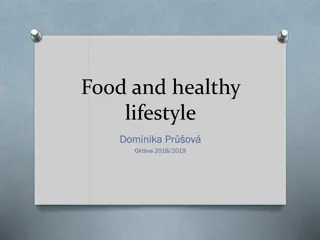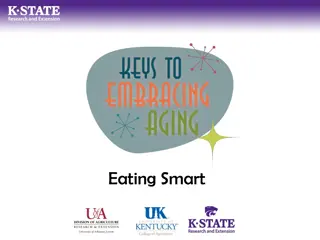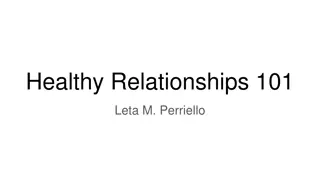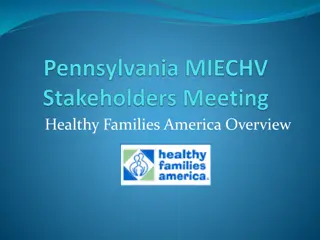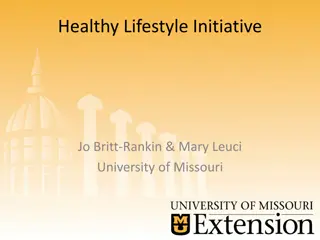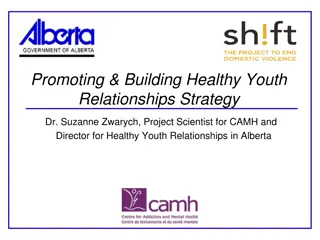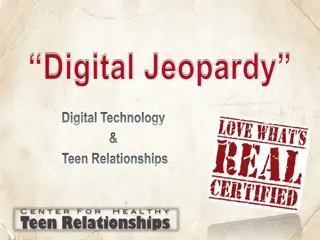Understanding the Path to a Healthy Life
Exploring the essential aspects of living a healthy life, this content delves into key concepts such as health and wellness, the health continuum, lifestyle factors, prevention, and health education. It also discusses the nation's health goals and the importance of being health literate. By emphasizing factors like sleep, nutrition, physical activity, and stress management, it provides valuable insights to help individuals, communities, and families achieve optimal health and well-being.
Download Presentation

Please find below an Image/Link to download the presentation.
The content on the website is provided AS IS for your information and personal use only. It may not be sold, licensed, or shared on other websites without obtaining consent from the author. Download presentation by click this link. If you encounter any issues during the download, it is possible that the publisher has removed the file from their server.
E N D
Presentation Transcript
LIVING A HEALTHY LIFE CHAPTER 1
VOCABULARY Health: the combination of physical, mental/emotional, and social well-being. Wellness: an overall state of well- being, or total health.
THE HEALTH CONTINUUM Improved Health and Wellness Loss of Health and Wellness Premature Death High Level of Health Chronic disorders Lack of energy, inattention, minor aches and pains Free from aches and pains Moderate level of energy Optimal level of energy, feeling of well-being Many people function below the wellness midpoint.
LIFESTYLE FACTORS 8-10 hours of sleep each night Healthy breakfast Eating a variety of nutritious foods each day Being physically active for at least 20 minutes a day, 3 or more days a week Maintaining a healthy weight Avoiding tobacco, alcohol, and other drugs Abstaining from sexual activity before marriage Manage stress Maintaining positive relationships Practicing safe behaviors to prevent injuries
VOCABULARY Prevention: practicing health and safety habits to remain free of disease and injury. Health Education: the providing of accurate health information to help people make healthy choices.
THE NATIONS HEALTH GOALS HEALTHY PEOPLE 2020 INDIVIDUALS COMMUNITIES FAMILIES Take an active role in their own health Make informed decisions Access reliable health care information & services Promote health of others Provide health services Behavior changing classes Ensure safe environment Shape attitudes & beliefs Teach children values & skills necessary to maintain good health
VOCABULARY Health Literate: a person s capacity to learn about and understand basic health information and services and use these resources to promote his or her health and wellness.
BECOMING HEALTH LITERATE HEALTH LITERATE A critical thinker and problem solver A responsible, productive citizen A self-directed learner An effective communicator
HEALTH TRIANGLE SOCIAL HEALTH PHYSICAL HEALTH MENTAL/EMOTIONAL HEALTH
INFLUENCES ON YOUR HEALTH Heredity Environment Attitude Behavior Media Technology Physical Social Culture
VOCABULARY Heredity: all the traits that were biologically passed on to you from your parents. Environment: the sum of all your surroundings.
VOCABULARY Peers: people of the same age who share similar interests. Culture: the collective beliefs, customs, and behaviors of a group.
VOCABULARY Media: the various methods of communicating information.
BUILDING HEALTH SKILLS & CHARACTER CHAPTER 2
STEPS OF THE DECISION-MAKING PROCESS Step 1: Step 3: Step 2: State the Situation Weigh the Possible Outcomes H (Healthful E (Ethical) L (Legal) P (Parent Approval) List the Options Step 5: Step 6: Evaluate the Decision Step 4: Make a Decision and Act on it Consider Values
VOCABULARY Short-Term Goals: your goals that can be achieved in a couple days/weeks. Long-Term Goals: your goals that can be achieved in a couple weeks/months/years.
GOAL SETTING 1. Set a specific, realistic goal, and write it down. 2. List the steps you will take to reach your goal. 3. Identify sources of help and support. 4. Set a reasonable time frame for reaching your goal. 5. Evaluate your progress by establishing checkpoints. 6. Reward yourself for achieving your goal.
My Goal:_____________________________ What is a goal you have for yourself? Steps you need to take to reach goal: 1. 2. 3. 4. 5. 1 Short-term Goal & 1 Long-term Goal Write the goal down and then go through the goal setting process to help you achieve your goal. Sources of help and support: 1. 2. Reasonable time frame for reaching goal: 1. Finish this as your warm-up today, then turn in when you are finished. Checkpoints for evaluating progress: 1. 2. 3. Reward for achieving goal: 1.
TRAITS OF GOOD CHARACTER Trustworthiness Respect Responsibility Fairness Caring Citizenship
ROLE MODELS What Role Models do for you: 1. Encourage and Support your goals 2. Promote your health and health of your family. 3. Inspire and Encourage basic values Why Role Models are Important: 1. Increase feelings of self-worth 2. Satisfaction 3. Sense of Purpose
BEING A HEALTH- LITERATE CONSUMER CHAPTER 3
INFLUENCES ON YOUR HEALTH DECISIONS Media Advertising Comparing Choices Product Labels
HIDDEN MESSAGE TECHNIQUES IN ADVERTISING Bandwagon Rich and Famous Free Gifts Great Outdoors Good Times Testimonial
We are selling a new brand of house-hold cleaner called WonderClean. It cleans anything from carpets to that nasty bathtub scum. It s on sale today for $15.99 a bottle. But wait, if you call in the next 30 minutes we will give you the WonderSponge absolutely free! So call now and not only will you get a bottle of WonderClean, but you will also get the WonderSponge free! What Type of Hidden Message Technique is Used?
Hi, my name is Tony Romo and I am the Quarterback of the Dallas Cowboys. Do you feel tired after a long day and you don t ever feel like you have a lot of energy. Well, I started taking the WonderPill to help give me energy. I never get tired during practices and games any more. You should call now to get your bottle of WonderPills so you can have energy like me. What Type of Hidden Message Technique is Used?
Every day at Highland Middle School the students use their planners. You won t be organized and know due dates if you don t have the most current HMS Planner. You should see your school counselor today and get a HMS Planner. If you want to make friends and look smart use your HMS Planner. All the cool kids do! What Type of Hidden Message Technique is Used?
HEALTH SERVICES Primary Care: doctor s who provide physical check- ups and general care (also school nurses and dentist) Specialist: medical doctors trained to handle particular kinds of patients or medical conditions.
TYPES OF SPECIALIST Specialist Allergist Dermatologist Neurologist Oncologist Orthodontist Specializes In Allergies Skin diseases Nervous system problems Cancer Adjustment of teeth to improve bite and jaw alignment Skeletal deformities or injuries Children s health Mental health Orthopedist Pediatrician Psychiatrist
You get sick and need to go see your primary care doctor. Your primary care doctor diagnoses you with the flu and prescribes you some medication. You go to the pharmacist to pick up your medication. What questions might you ask your pharmacist when picking up your medication?
PUBLIC HEALTH AT THE NATIONAL LEVEL Agencies How they protect health National Cancer Institute (NCI) Federal government s principal agency for cancer research Environmental Protection Agency (EPA) Responsible for protecting the country s air, water, and land Occupational Safety and Health Administration (OSHA) Works to prevent injuries and safeguard the health of workers across the country United States Department of Agriculture (USDA) Leads the federal antihunger effort with food stamps, school lunch, school breakfast programs. Food Safety and Inspection Service (FSIS) Responsible for the safety of meat, poultry, and egg products.
PUBLIC HEALTH AT THE NATIONAL LEVEL Agencies How they protect health Department of Health and Human Services (DHHS) Oversees more than 300 health-related programs. These programs are administered by 13 agencies: 1. Centers for Medicare and Medicaid Services (CMS) 2. Food and Drug Administration (FDA) 3. National Institute of Health (NIH) 4. Substance Abuse and Mental Health Services Administration (SAMHSA) 5. Centers for Disease Control and Prevention (CDC) 6. Federal Trade Commission (FTC)
Why is it important for the Food and Drug Agency (FDA) to test products such as food, drugs, and cosmetics before these products are sold to the public?
Why might restaurant inspections be handled by the government agencies instead of the restaurant themselves?







